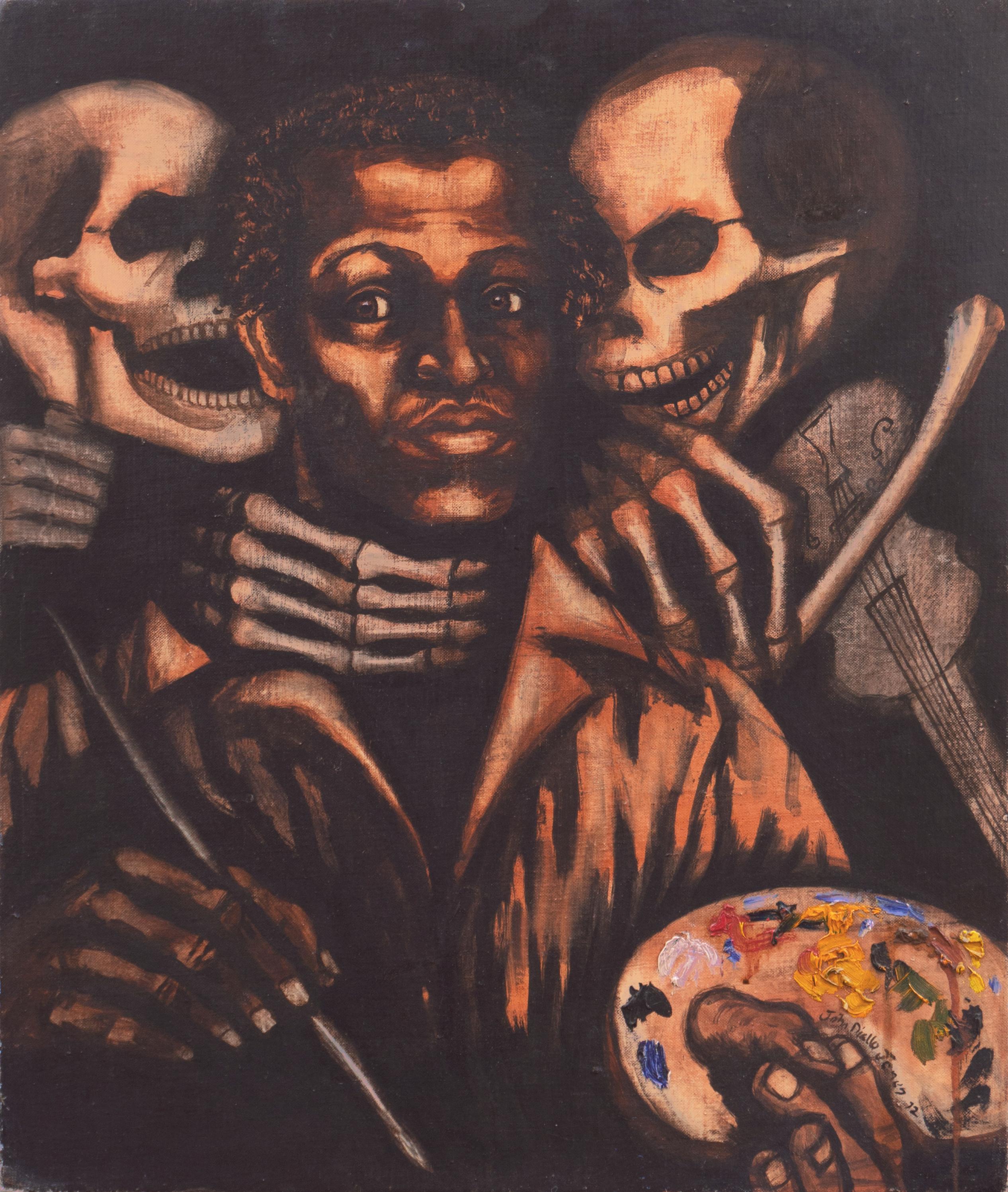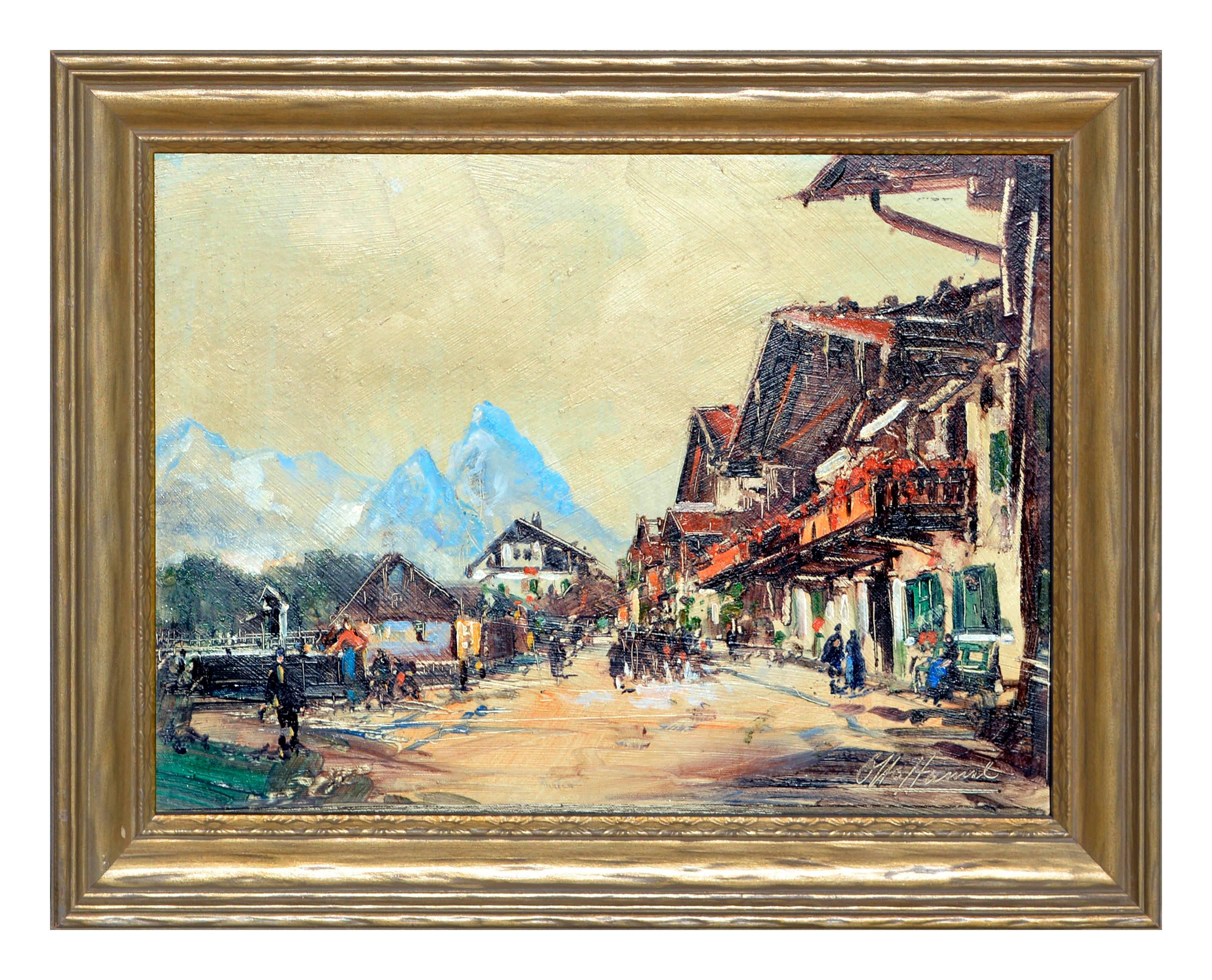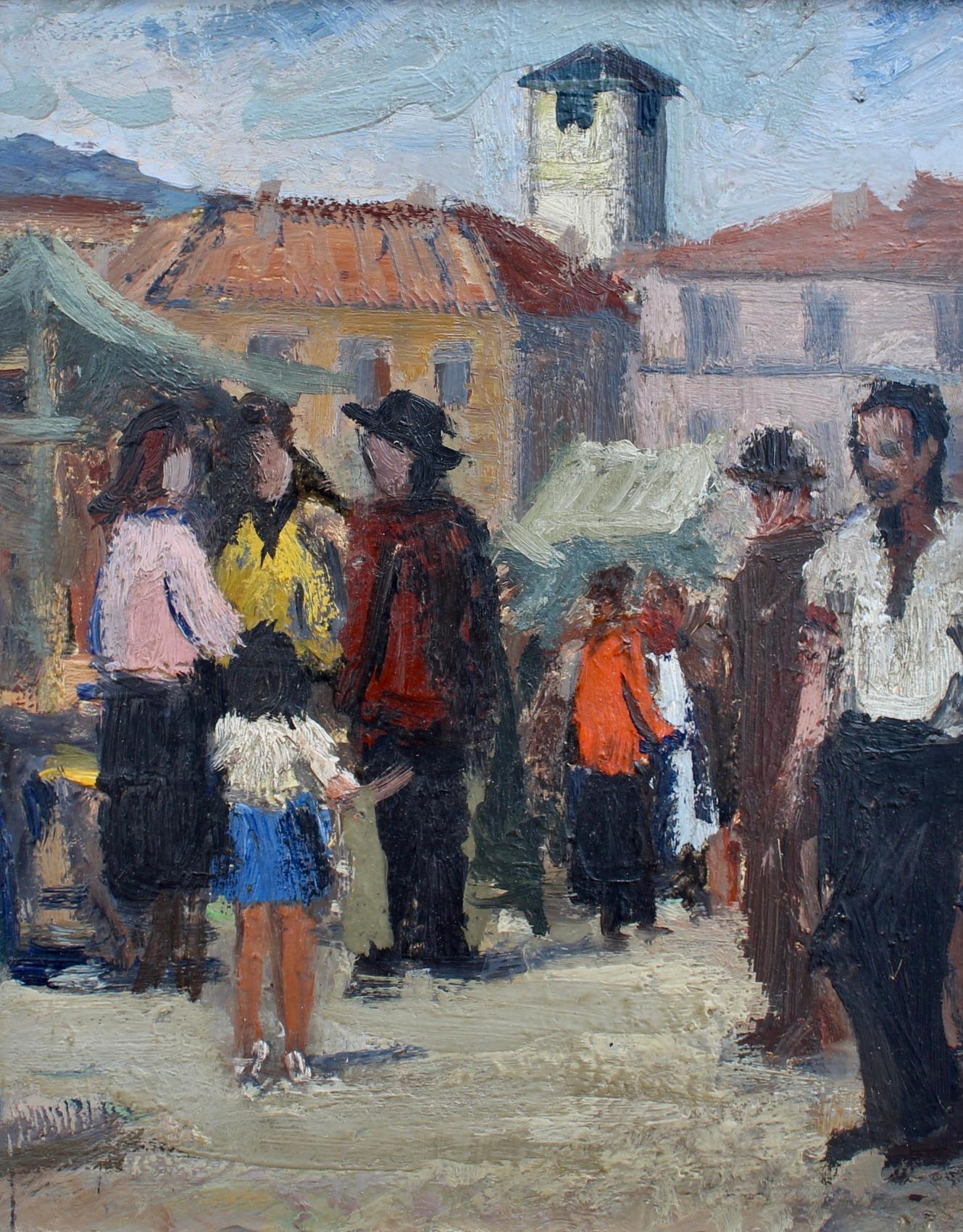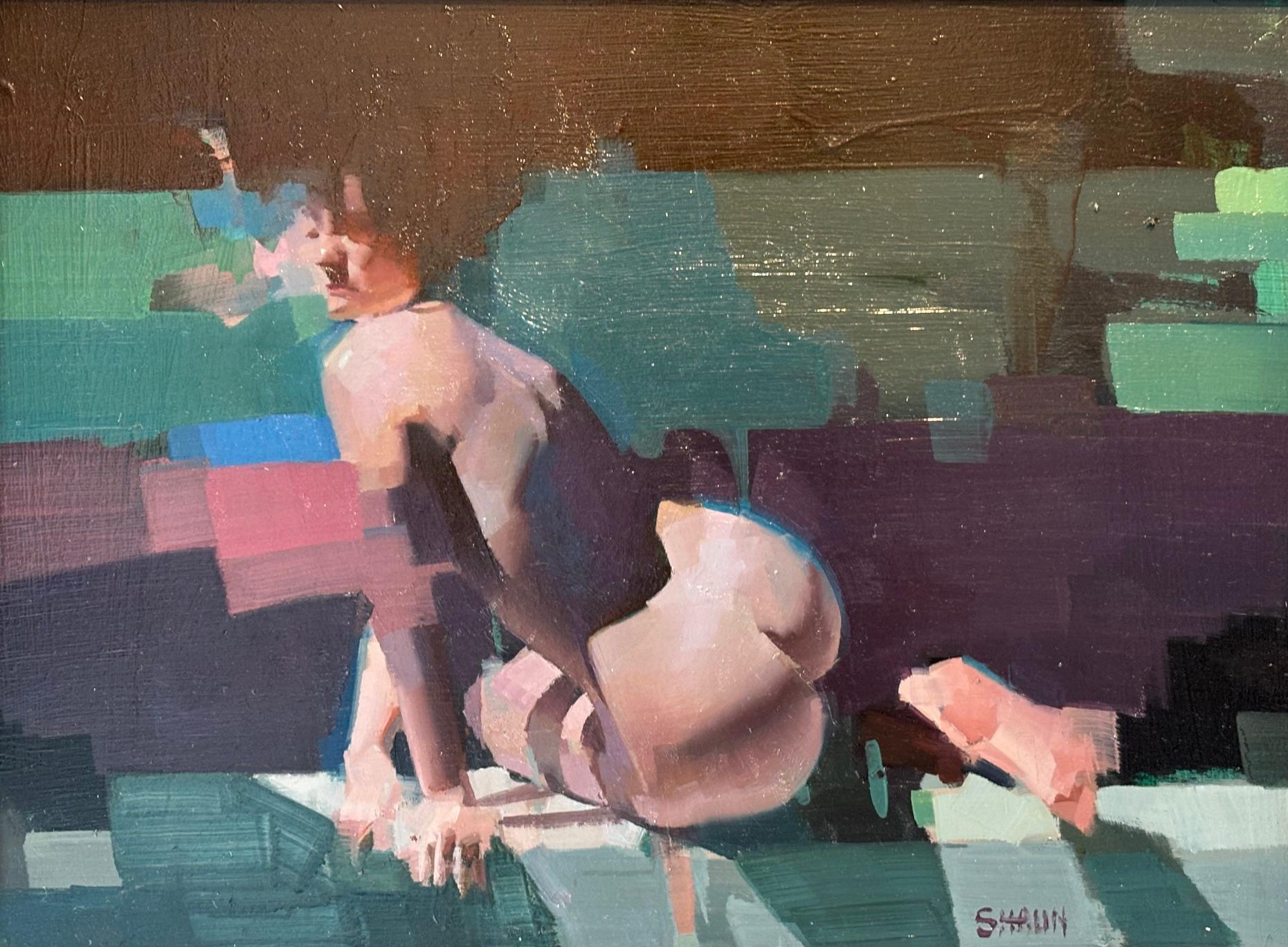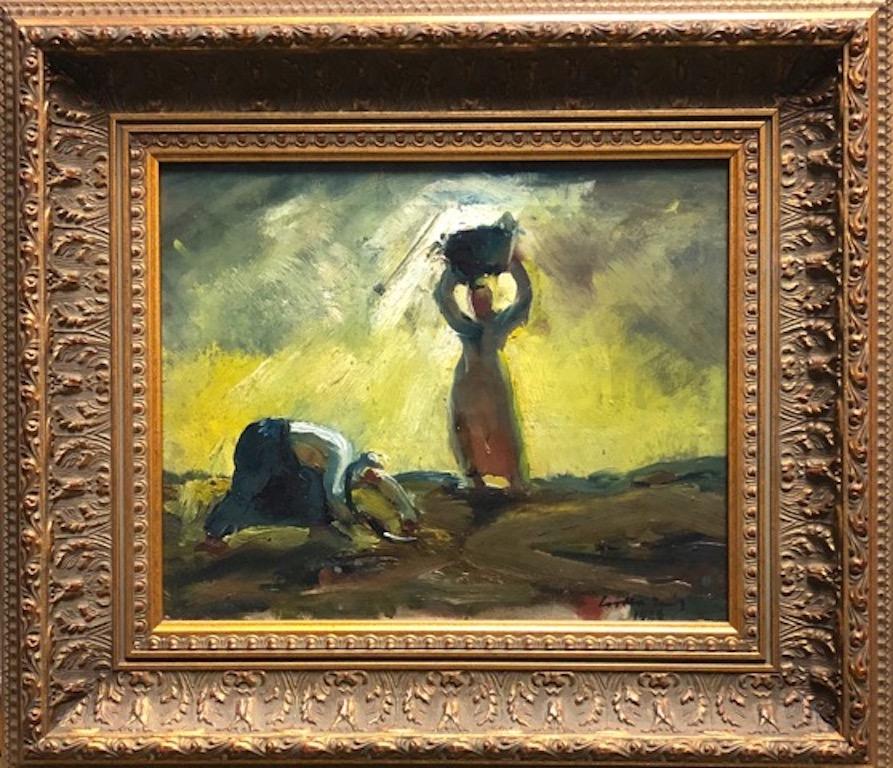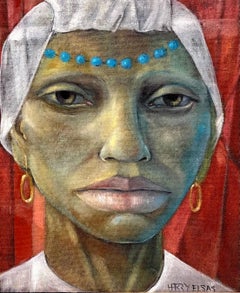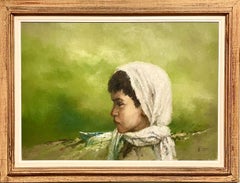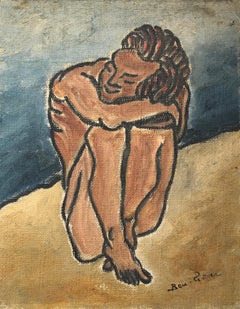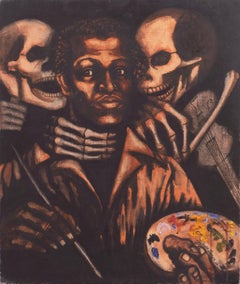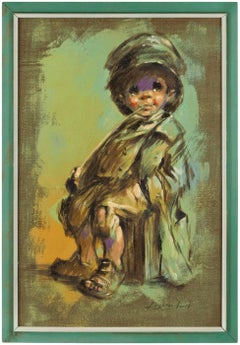
Runaway Child, Expressionist Oil Painting
View Similar Items
Want more images or videos?
Request additional images or videos from the seller
1 of 7
Barry Leighton-JonesRunaway Child, Expressionist Oil Painting
$1,400List Price
About the Item
- Creator:Barry Leighton-Jones (1932, British)
- Dimensions:Height: 32.5 in (82.55 cm)Width: 22.5 in (57.15 cm)
- Medium:
- Movement & Style:
- Period:
- Condition:Measurements include frame.
- Gallery Location:Surfside, FL
- Reference Number:1stDibs: LU3821997623
About the Seller
4.9
Platinum Seller
Premium sellers with a 4.7+ rating and 24-hour response times
Established in 1995
1stDibs seller since 2014
1,782 sales on 1stDibs
Authenticity Guarantee
In the unlikely event there’s an issue with an item’s authenticity, contact us within 1 year for a full refund. DetailsMoney-Back Guarantee
If your item is not as described, is damaged in transit, or does not arrive, contact us within 7 days for a full refund. Details24-Hour Cancellation
You have a 24-hour grace period in which to reconsider your purchase, with no questions asked.Vetted Professional Sellers
Our world-class sellers must adhere to strict standards for service and quality, maintaining the integrity of our listings.Price-Match Guarantee
If you find that a seller listed the same item for a lower price elsewhere, we’ll match it.Trusted Global Delivery
Our best-in-class carrier network provides specialized shipping options worldwide, including custom delivery.More From This Seller
View AllExpressionist African American Woman Portrait German Brazilian Harry Elsas
Located in Surfside, FL
Framed 20.5 x 18 image 14.5 x 12
Heinz Hugo Erich Elsas, (German-Brazilian 1925-1994) later known as Harry Elsas. Muralist, writer, designer best known as a painter.
Born in 1925 in Stuttgart, Germany, 1n 1936 At the age of 14 he moved with his family to Sao Paulo, Brazil fleeing from World War II and of the persecution of the Jews. A self taught artist he was influenced by the Flemish artists, his work reveals remarkable influence of Brueghel and Hieronymus Bosch. He worked in the workshop of Portinari, participating in the Tiradentes mural. His work went through a post-Expressionist phase, culminating in the adoption of cubism and is characterized by the habit of creating a three-dimensional structure before painting a picture. In 1945, he was working with Lasar Segall...
Category
20th Century Expressionist Figurative Paintings
Materials
Oil, Board
Large Israeli Expressionist Orientalist Oil Painting Draped Child Kibbutz Art
By William Weintraub
Located in Surfside, FL
William (Sunny) Weintraub, Israeli (Born 1926)
Oil on masonite
William Weintraub (He was also known as Shlomo Weintraub and nicknamed Sonny Weintraub)
Genre: Impressionist
Subject: Portrait
Medium: Oil
Surface: Canvas
Dimensions: framed 24 X 32.5 canvas 19 X 27
In an ever-changing art world that embraces one movement after the next, the timeless art of portraiture can become lost. Portraiture is often associated with the royal paintings of centuries-old French kings, European nobility, and other wealthy individuals from art history's past. However, styles like Social Realism and Dutch genre painting spotlighted...
Category
Mid-20th Century Expressionist Figurative Paintings
Materials
Canvas, Oil, Board
American Modernist Oil Painting Nude Male on Beach WPA Artist Group of 10
By Ben-Zion Weinman
Located in Surfside, FL
Born in 1897, Ben-Zion Weinman celebrated his European Jewish heritage in his visual works as a sculptor, painter, and printmaker. Influenced by Spinoza, Knut Hamsun, and Wladyslaw Reymont, as well as Hebrew literature, Ben-Zion wrote poetry and essays that, like his visual work, attempt to reveal the deep “connection between man and the divine, and between man and earth.”
An emigrant from the Ukraine, he came to the US in 1920. He wrote fairy tales and poems in Hebrew under the name Benzion Weinman, but when he began painting he dropped his last name and hyphenated his first, saying an artist needed only one name.
Ben-Zion was a founding member of “The Ten: An Independent Group” The Ten” a 1930’s avant-garde group, Painted on anything handy. Ben-Zion often used cabinet...
Category
Mid-20th Century Expressionist Figurative Paintings
Materials
Oil, Board
Mid Century Expressionist European Nighttime Steet Scene
Located in Surfside, FL
Moody, Expressive European oil painting. signed illegibly lower right. it looks to be German or Austrian.
Category
20th Century Expressionist Figurative Paintings
Materials
Oil, Board
Gouache Painting Jules Pascin Hand Signed Woman in Boudoir German Expressionism
By Jules Pascin
Located in Surfside, FL
Genre: German Expressionist
Subject: Woman
Medium: gouache paint
Surface: Paper board
This is hand signed lower right.
Framed it measures 17.25 X 15.5, sheet 12 X 10
This came from a Jewish estate. there was no additional paperwork or provenance.
Julius Mordecai Pincas (March 31, 1885 – June 5, 1930), known as Pascin Jules...
Category
Early 20th Century Expressionist Figurative Paintings
Materials
Paper, Gouache, Cardboard
Modernist Orchestra Musical Gouache Painting Boston Expressionist
By David Aronson
Located in Surfside, FL
Very vibrant, dynamic orchestra scene reminiscent of the work of Mopp (Max Oppenheim)
David Aronson, (1923-2015) son of a rabbi, was born in Lithuania in 1923 and immigrated to America at the age of five. He settled in Boston, Massachusetts where he studied at the school of the Museum of Fine Arts under Karl Zerbe, a German painter well known in the early 1900s. Aronson later taught at the school of the Museum of Fine Arts for fourteen years and founded the School of Fine Art at Boston University where he is today a professor emeritus. An internationally renowned sculptor & painter, Aronson has won acclaim for his interpretation of themes from the Hebrew Talmud and Kabala. His best known works include bronze castings, encaustic paintings, and pastels. His work is included in many important public and private collections, and has been shown in several museum retrospectives around the country. He is considered to be one of the most important 20th century American artists.
At twenty-two David Aronson had his first one-man show at New York's Niveau Gallery. The next year, six of his Christological paintings were included in the Fourteen Americans exhibition at Manhattan's Museum of Modern Art where Aronson’s work was included alongside abstract expressionists Arshile Gorky, Robert Motherwell and Isamu Noguchi. In the 1950s, Aronson turned more toward his Jewish heritage for the inspiration for his art. Folklore as well as Kabalistic and other transcendental writings influenced his work greatly. The Golem (a legendary figure, brought to life by the Maharal of Prague out of clay to protect the Jewish community during times of persecution) and the Dybbuk (an evil spirit that lodges itself in the soul of a living person until exorcised) frequently appear in his work.
In the sixties, Aronson turned to sculpture. His work during this period is best exemplified by a magnificent 8’ x 4’ bronze door which now stands at the entrance to Frank Lloyd Wright's Johnson Foundation Conference Center for the Arts in Racine, Wisconsin. In the seventies and eighties, Aronson continued his work in pastel drawings, paintings, and sculptures, often exploring religion and the frailties of man's nature. During this time, in addition to a traveling retrospective exhibition and many one-man shows in New York, Los Angeles, Chicago, and Boston at the Pucker-Safrai Gallery on Newbury Street, Aronson won many awards and became a member of the National Academy of Design in New York. Two years ago he retired from teaching to work full-time in his studio in Sudbury, Massachusetts.
included in the catalog
Contemporary Religious Imagery in American Art
Catalog for an exhibition held at the Ringling Museum of Art, March 1-31, 1974.
Artists represented: David Aronson, Leonard Baskin, Max Beckmann, Hyman Bloom, Fernando Botero, Paul Cadmus, Marvin Cherney, Arthur G. Dove, Philip Evergood, Adolph Gottlieb, Jonah Kinigstein, Rico Lebrun, Jack Levine, Louise Nevelson, Barnett Newman, Abraham Rattner, Ben Shahn, Mark Tobey, Max Weber, William Zorach and others.
Selected Awards
1990, Certificate of Merit, National Academy of Design
1976, Purchase Prize, National Academy of Design
1976, Joseph Isidore Gold Medal, National Academy of Design
1976, Purchase Prize in Drawing, Albrecht Art Museum
1975, Isaac N. Maynard Prize for Painting, National Academy of Design
1973, Samuel F. B. Morse Gold Medal, National Academy of Design
1967, Purchase Prize, National Academy of Fine Arts
1967, Adolph and Clara Obrig Prize, National Academy of Design
1963, Gold Medal, Art Directors Club of Philadelphia
1961, 62, 63, Purchase Prize, National Institute of Arts and Letters
1960, John Siimon Guggenheim Fellowship
1958, Grant in Art, National Institute of Arts and Letters
1954, First Prize, Tupperware Annual Art Fund Award
1954, Grand Prize, Third Annual Boston Arts Festival
1953, Second Prize, Second Annual Boston Arts Festival
1952, Grand Prize, First Annual Boston Arts Festival
1946, Traveling Fellowship, School of the Museum of Fine Arts
1946, Purchase Prize, Virginia Museum of Fine Arts
1944, First Popular Prize, Institute of Contemporary Art
1944, First Judge's Prize, Institute of Contemporary Art
Selected Public Collections
Art Institute of Chicago
Virginia Museum of Fine Arts
Bryn Mawr College
Brandeis University
Tupperware Museum, Orlando, Florida
DeCordova Museum
Museum of Modern Art Print Collection, New York
Atlanta University
Atlanta Art...
Category
20th Century Expressionist Figurative Paintings
Materials
Gouache, Board
You May Also Like
Torero and Bull bullfighter bullfighting oil painting
Located in Barcelona, Barcelona
Title: Torero and Bull
Artist: José María Tuser Vázquez (1919-1986)
Technique: Oil on canvas mounted on board
Dimensions: 18.9 x 15 inches
Framing: Unframed
Art Movement: Costumbrismo, Figurative Expressionism
Theme: Bullfighting
Date of Creation: Second half of the 20th century
DESCRIPTION
The painting Torero and Bull depicts a classic bullfighting scene, where a matador, elegantly dressed in a golden and violet traje de luces, performs a pass with the cape while the bull, wounded with banderillas, bows toward the ground. The composition conveys dynamism and tension, emphasizing the drama of the moment with loose and expressive brushstrokes.
The background is rendered in warm, diffused tones, contrasting with the deep black of the bull and the vivid hues of the cape. The thick brushwork and vibrant oil application enhance the sense of movement and emotion in the scene, a distinctive feature of Tuser Vázquez’s bullfighting paintings.
ARTIST'S BIOGRAPHY
José María Tuser Vázquez (Barcelona, 1919 - 1986) was a Spanish painter specializing in bullfighting themes. He trained at the School of Arts and Crafts in Barcelona, where he developed a strong foundation in drawing and painting. From 1947 onwards, he dedicated his artistic production to tauromaquia, creating posters, illustrations, and paintings that captured the intensity of the bullfighting spectacle.
He was a regular contributor to the magazine El Ruedo and designed a series of postcards featuring traditional Spanish costumes for Editorial Artigas in the 1940s. His work has been auctioned numerous times and is highly valued by collectors of bullfighting art...
Category
1960s Expressionist Figurative Paintings
Materials
Canvas, Oil, Board
$829 Sale Price
30% Off
Bird in a Blooming Garden
Located in Zofingen, AG
In creating this piece, I was moved by the serene beauty of nature, capturing a moment where a small bird perches amid blooming flowers. The brush strokes and oils allowed me to expl...
Category
2010s Expressionist Animal Paintings
Materials
Canvas, Oil, Cardboard
In the arms of the Angel
Located in Zofingen, AG
In creating this piece, I embraced the delicate dance between realism and expressionism, aiming to convey deep emotion. The soft interplay of light and shadow across the figure's for...
Category
2010s Expressionist Interior Paintings
Materials
Oil, Canvas, Cardboard, Giclée
'Words to the Wise', African American Memento Mori, Skeletons, Bay Area, Black
Located in Santa Cruz, CA
Signed on palette, lower right, 'John Diallo Jones' (American, 20th century) and dated 1992.
A dramatic figural oil showing the artist flanked by two whispering skeletons, one of wh...
Category
1970s Expressionist Figurative Paintings
Materials
Board, Oil
Early 20th Century Swiss Alps Village Landscape
By Otto Hamel
Located in Soquel, CA
Substantial small painting of a Swiss Mountain village by Otto Hamel (German, 1866-1950). Signed "Otto Hamel" lower right. Presented in a giltwood frame. Image, 9.5"H x 13"L.
A German Expressionist, Otto Hamel studied at the Royal Art School in Erfurt under Eduard von Hagen...
Category
Early 20th Century Expressionist Landscape Paintings
Materials
Oil, Board
$1,436 Sale Price
20% Off
Family Seated on a Bench at the Port
By François Diana
Located in London, GB
'Family Seated on a Bench at the Port', oil on board, by François Diana (circa 1970s). A painting with a very wholesome, homespun theme harks back to a more innocent time. A family i...
Category
1970s Expressionist Figurative Paintings
Materials
Oil, Board
$1,205 Sale Price
20% Off
Recently Viewed
View AllMore Ways To Browse
Vintage Black And White Clown
Vintage Wizard Art
British Figurine
Diana Dors
Royal Minton
Princess Diana Print
Norman Rockwell Plate
Frederic Leighton
Lord Leighton
Vintage Clown Figurines
Princess Diana Plate
Leighton Jones
Minton Figurines
Barry Leighton Jones
Lucy Glick
Moroccan Girl
Paul Guiragossian
Pierre Germain
